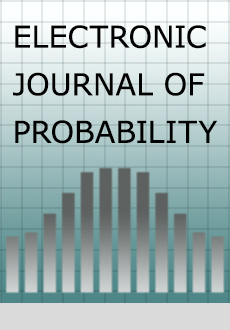Abstract
We consider a discrete forest-fire model on the upper half-plane of the two-dimensional square lattice. Each site can have one of the following two states: "vacant" or "occupied by a tree". At the starting time all sites are vacant. Then the process is governed by the following random dynamics: Trees grow at rate 1, independently for all sites. If an occupied cluster reaches the boundary of the upper half plane or if it is about to become infinite, the cluster is instantaneously destroyed, i.e. all of its sites turn vacant. Additionally, we demand that the model is invariant under translations along the x-axis. We prove that such a model exists and arises naturally as a subseqential limit of forest-fire processes in finite boxes when the box size tends to infinity. Moreover, the model exhibits a phase transition in the following sense: There exists a critical time $t_c$ (which corresponds with the critical probability $p_c$ in ordinary site percolation by $1 - e^{-t_c} = p_c$) such that before $t_c$, only sites close to the boundary have been affected by destruction, whereas after $t_c$, sites on the entire half-plane have been affected by destruction.<br />
Citation
Robert Graf. "A forest-fire model on the upper half-plane." Electron. J. Probab. 19 1 - 27, 2014. https://doi.org/10.1214/EJP.v19-2625
Information





